Kimbap, a popular Korean snack loved by many, consists of a variety of tasty fillings, such as marinated vegetables, fried eggs, and meat, all rolled up in a sheet of dried seaweed with seasoned rice.
Perfect for a quick lunch or a delightful picnic treat, kimbap is often compared to sushi but really boasts its own unique flavors and textures. The use of gim (dried seaweed) and bap (rice) creates a perfect harmony of distinctly Korean ingredients.
Whether enjoyed at a family gathering or packed for a day out, kimbap is versatile, easy to eat, and has remained a beloved staple in Korean cuisine for generations - it's even available at Korean convenience stores.
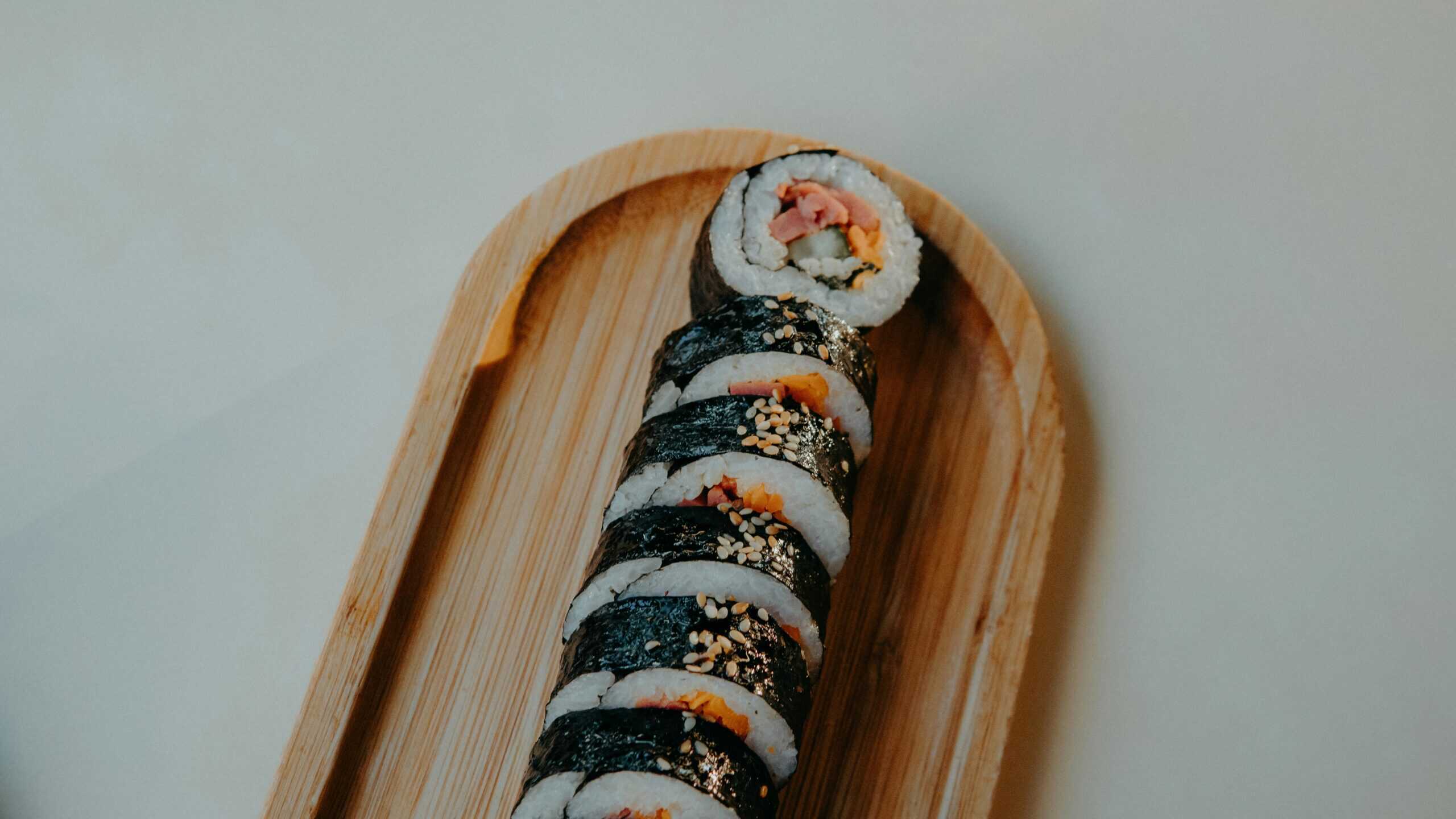
Jump to:
📜 History and Cultural Significance
Origins in Korea
Kimbap has roots in traditional Korean eating habits, with the practice of wrapping food in seaweed dating back to the Joseon era. People of that time enjoyed wrapping rice and side dishes in seaweed, known as ssam, which evolved into modern kimbap—combining cooked rice, vegetables, meat, and fish, all rolled in dried seaweed.
Kimbap has become a staple in Korean picnics, banchan (side dishes), and dosirak (packed lunch boxes). Its portability and variety make it a popular choice for outdoor activities. While some believe it was influenced by Japanese norimaki during Japan's colonial rule, its unique ingredients and preparation set it apart.
Kimbap vs. Sushi
Though often compared to sushi, kimbap has notable differences. It uses cooked ingredients and different seasonings, with kimbap rice typically seasoned with sesame oil and salt, while sushi rice is seasoned with vinegar.
This gives kimbap a distinct flavor profile that reflects Korean culinary traditions. The fillings, which often include fish cakes, marinated vegetables, eggs, and ground meat, contrast with sushi, which typically features raw fish.
Kimbap is a colorful, flavor-rich dish that is distinctly Korean, celebrated for its balance of tastes and textures.
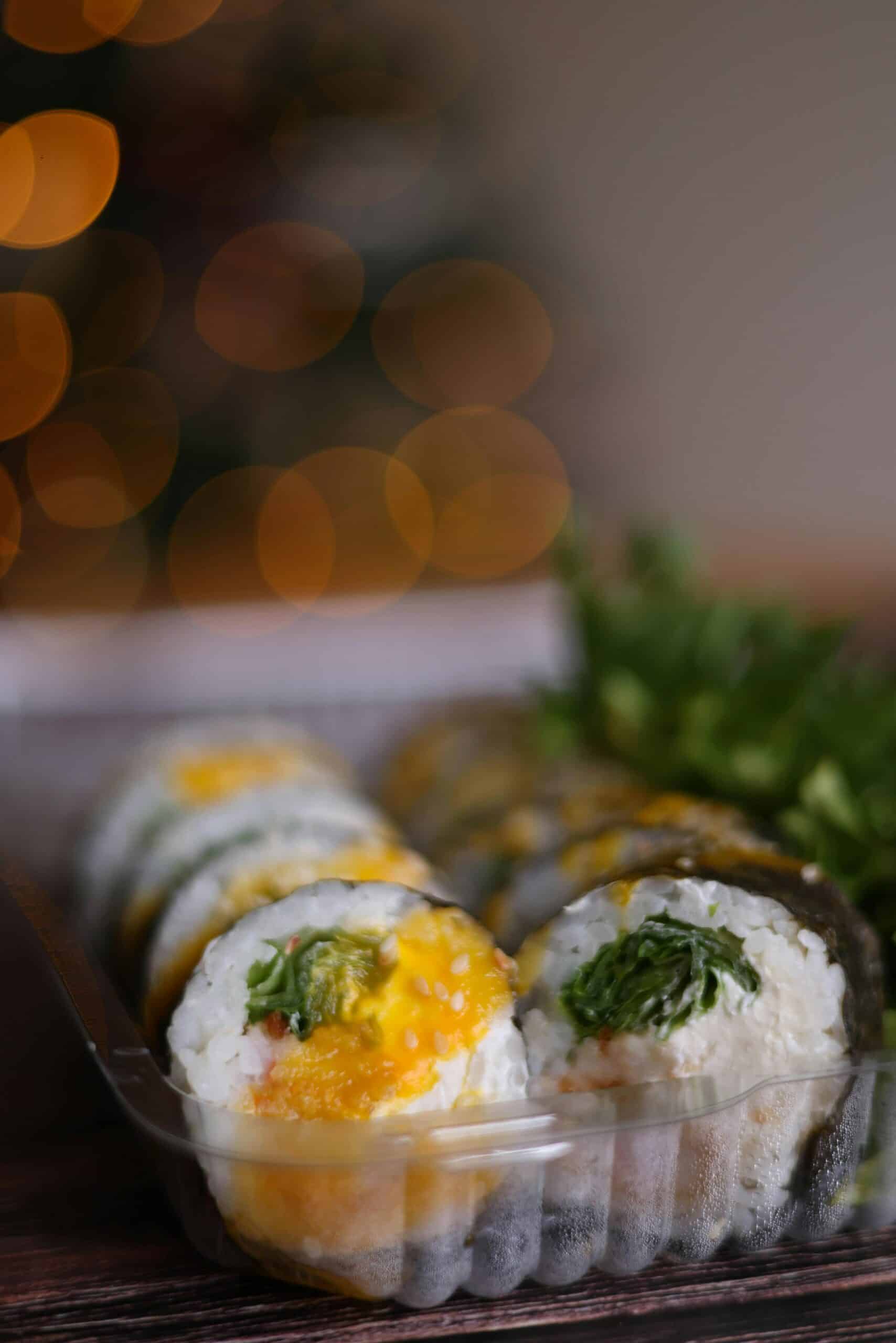
🍣 Key Ingredients
Rice and Its Seasoning
The base of kimbap is short-grain Korean rice, which is sticky and clings well together. After cooking, the rice is lightly seasoned with sesame oil and salt to add flavor, with a touch of rice vinegar sometimes used, though less commonly than in sushi.
The seasoned rice forms the core of kimbap and provides a subtle, savory base that complements the fillings.
Vegetables Commonly Used
Vegetables add crunch and color to kimbap, with common options like julienned, lightly cooked carrots and spinach, which is usually blanched and seasoned with soy sauce and sesame oil before being folded in.
Cucumber, adding a crisp texture and pickled radish (danmuji), giving a tangy and slightly sweet flavor, make kimbap visually appealing while contributing different textures and tastes.
Protein Varieties
Kimbap can include a variety of proteins, with eggs being a staple, usually made into a thin omelette and sliced into strips. Another popular choice is either spam or ground beef seasoned with soy sauce, sugar, and garlic, then cooked until flavorful.
Fish cakes and ham are other common additions, while seasoned tofu can be used for a vegetarian or vegan version. Each protein adds its unique taste and texture, making every bite of kimbap satisfying and rich in flavor.
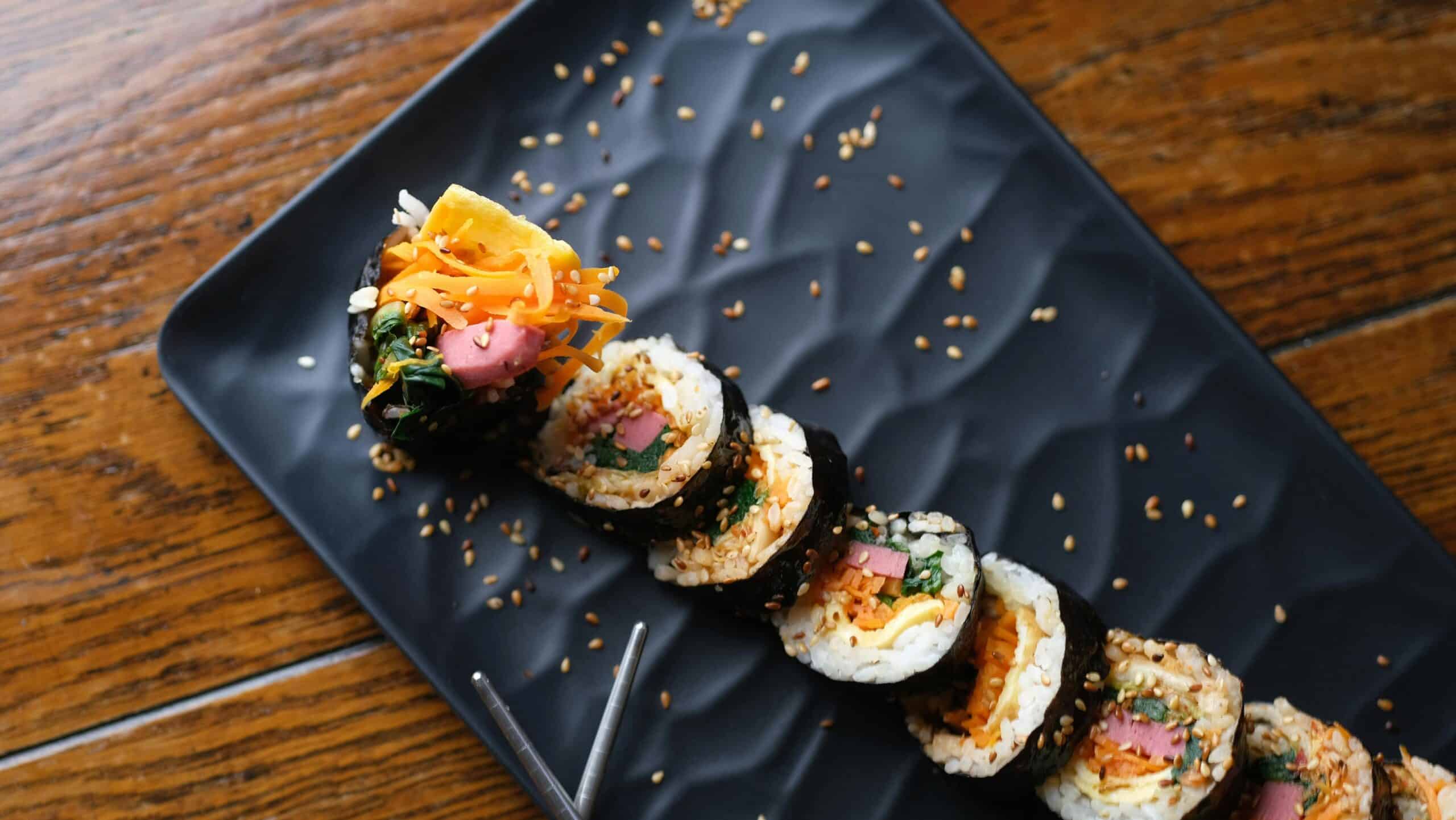
🔪 How to Make Kimbap at Home
Making kimbap involves carefully assembling the layers and then rolling and slicing the ingredients into perfect bite-sized pieces. The first step is cooking and prepping the ingredients: start with short-grain rice, cook it until sticky and fluffy, then season with a mixture of sesame oil and salt for flavor.
Dried seaweed, such as gim or nori, wraps kimbap, holding everything together while adding a slightly briny flavor. To do so, lay a sheet of dried seaweed (gim) on a bamboo mat with the shiny side down.
Then spread a thin layer of seasoned rice evenly over the seaweed, leaving about an inch of space at the top of the sheet. Next, arrange the vegetables and proteins in a line down the middle.
Roll it tightly using the bamboo mat to ensure a firm shape. Finally, the roll is sliced into bite-sized pieces, often sprinkled with sesame seeds for extra flavor and a nice presentation.
Use a sharp knife to cut the roll into ½-inch pieces, wiping the knife with a damp cloth between cuts to keep the slices neat. Repeat with the remaining ingredients, and your kimbap is ready to serve.
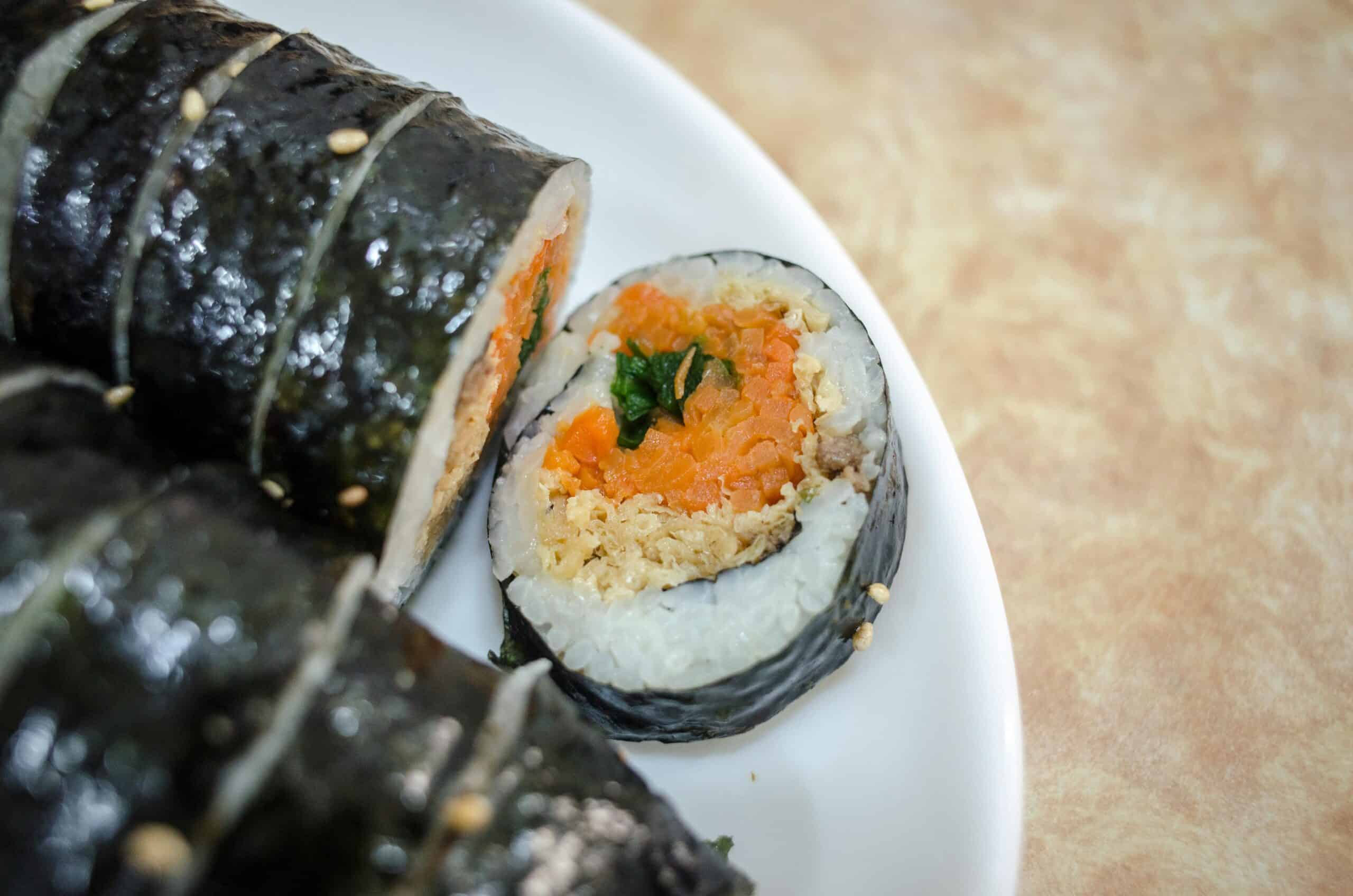
🍙 Variations of Kimbap
Classic Kimbap
Classic kimbap often includes danmuji (pickled radish), bimbap (steamed white rice), and burdock root, with common ingredients like imitation crab, carrot, spinach, and egg strips.
Some versions feature bulgogi kimbap, where thinly sliced marinated beef adds a rich flavor, while kimchi kimbap offers a spicy kick. These classic options are popular for picnics or everyday snacks due to their straightforward and tasty combinations.
Contemporary Twists
Contemporary versions introduce a variety of new flavors and creative fillings, with tuna kimbap being a modern favorite, often mixed with mayonnaise for a creamy texture. Tuna fried rice is the deconstructed version of this, and becoming similarly as popular.
Cheese kimbap, which blends melted cheese with traditional ingredients, is trending, especially among younger generations. For those seeking plant-based options, fully vegan and vegetarian kimbap are becoming increasingly common.
Ingredients like tofu, avocado, and different vegetables are becoming popular to create delicious and more nutritious rolls.
Regional Specialties
Kimbap varies by region, with local ingredients adding unique flavors. Some parts of Korea use perilla leaves for a fresh, herbal taste, while other specialties might include freshwater eel, offering a different savory delight.
Some regions emphasize specific flavors, like adding ssamjang (a thick, spicy paste) or a touch of sesame oil to enhance the overall taste. These regional specialties showcase how kimbap reflects local culinary traditions, making every bite a unique experience.
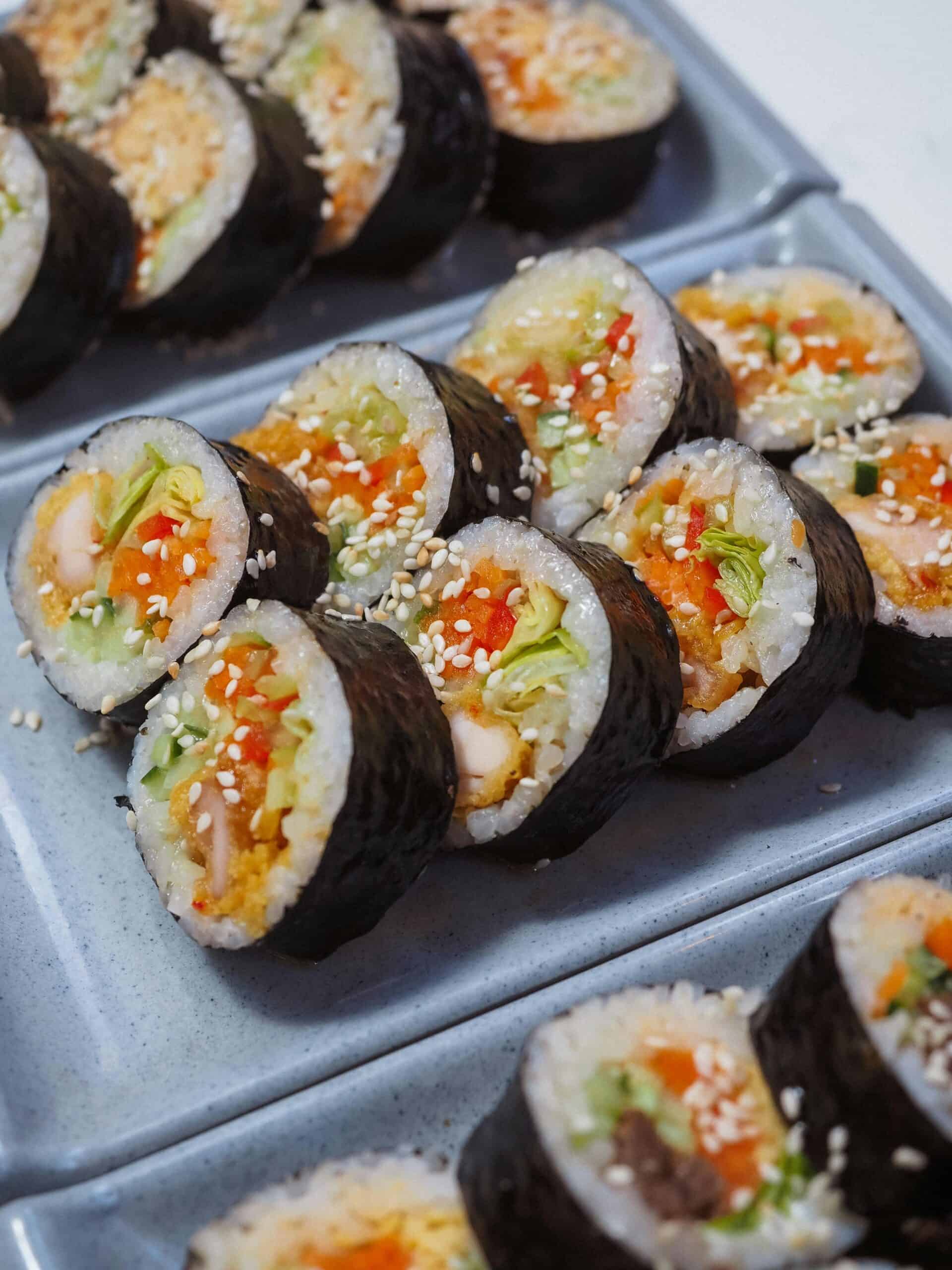
❓ Frequently Asked Questions
To make kimbap at home, lay a sheet of seaweed on a bamboo mat. Add a layer of seasoned rice, then place vegetables, egg, and meat in the center, in a straight line. Roll it tightly and slice it into bite-sized pieces.
The main ingredients in kimbap include rice flavored with sesame oil and salt, a variety of fillings such as marinated vegetables, egg, and sometimes meat or fish cake; each ingredient adds its unique taste and texture.
Yes, kimbap can be found at many Korean restaurants worldwide. It's become quite popular internationally, so many eateries include it on their menus to cater to fans of Korean cuisine.
Kimbap and sushi differ mainly in their seasoning and fillings. Kimbap is seasoned with sesame oil and salt, while sushi rice is seasoned with vinegar and sugar, and the fillings in kimbap are almost always cooked, whereas sushi might include raw fish.

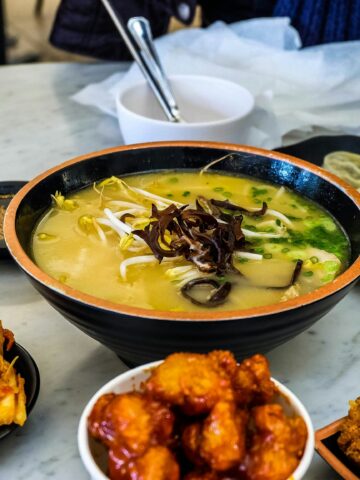
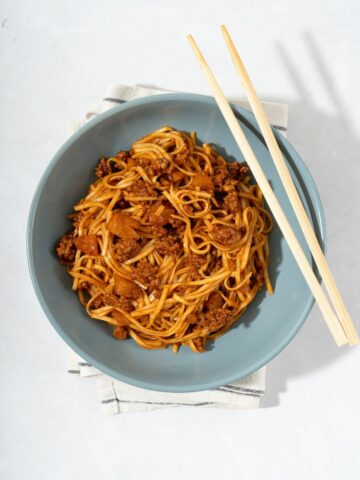

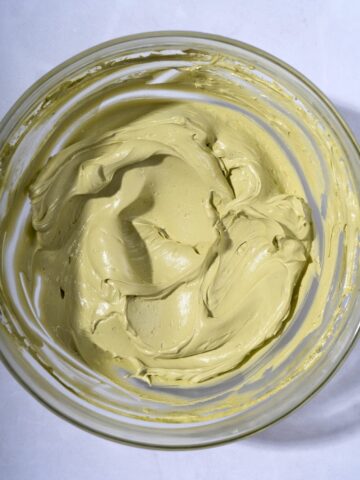
Comments
No Comments